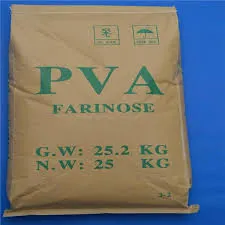Exploring the Role of Mortar and HPMC in Modern Construction
In the evolving field of construction, the materials we choose can significantly affect the durability, performance, and sustainability of our structures. One such combination that has gained attention is the use of mortar with Hydroxypropyl Methylcellulose (HPMC). This article delves into the properties and benefits of using HPMC in mortar applications, highlighting its advantages in modern construction.
Mortar, a fundamental material in masonry work, is primarily composed of cement, sand, and water. It serves as the binding agent that holds bricks, blocks, or stones together, providing structural integrity and aesthetic appeal. However, the performance of traditional mortar can be limited by its workability, adhesion, and overall durability, particularly in varying climates and environmental conditions. This is where HPMC, a water-soluble cellulose ether, plays a crucial role.
Exploring the Role of Mortar and HPMC in Modern Construction
Another significant advantage of HPMC-enhanced mortar is its increased adhesion. The addition of HPMC improves the bond strength between the mortar and substrates, ensuring that bricks or tiles remain securely in place even under stress. This heightened adhesion is crucial for both structural integrity and longevity, especially in regions prone to seismic activity or extreme weather conditions.
mortar hpmc

Moreover, HPMC contributes to the mortar's flexibility. Traditional mortars can become rigid and susceptible to cracking over time due to temperature fluctuations and settling. The inclusion of HPMC allows for a degree of elasticity, which absorbs and mitigates stress, reducing the likelihood of cracks and extending the lifespan of the masonry work.
HPMC is also recognized for its water-retention properties. A mortar mixture containing HPMC retains moisture for a more extended period, allowing for better hydration of the cement. This is particularly important in hot and dry environments where rapid evaporation can compromise the curing process. Enhanced water retention leads to improved strength development and reduces the chances of efflorescence, a common issue where soluble salts migrate to the surface and form unsightly white stains.
From an environmental perspective, HPMC is regarded as a sustainable additive. Being a cellulose derivative, it is derived from renewable sources, and its use can minimize the amount of cement needed in some formulations. This reduction is beneficial because cement production is a significant contributor to greenhouse gas emissions.
In conclusion, the integration of HPMC into mortar formulations represents a progressive step in modern construction practices. By enhancing workability, adhesion, flexibility, and water retention, HPMC allows for more durable and resilient structures. As the construction industry continues to seek innovative materials and techniques, the use of HPMC is likely to grow, offering sustainable solutions to meet the demands of contemporary building projects. As we look towards the future of construction, the collaboration between traditional materials like mortar and advanced additives like HPMC symbolizes a promising path forward in the pursuit of quality and sustainability.
-
Rdp Powder: Key Considerations for Wholesalers in the Building Materials IndustryNewsJul.08,2025
-
Key Considerations for Wholesalers: Navigating the World of Hpmc - Based ProductsNewsJul.08,2025
-
Hpmc Detergent: Key Considerations for WholesalersNewsJul.08,2025
-
Key Considerations for Wholesalers: China Hpmc For Tile Adhesive, Coating Additives, Concrete Additives, and MoreNewsJul.08,2025
-
Crucial Considerations for Wholesalers: Navigating the World of Construction MaterialsNewsJul.08,2025
-
Key Considerations for Wholesalers Sourcing Additive For Cement, Additive For Concrete, Additive For Putty from Additive Manufacturer Shijiazhuang Gaocheng District Yongfeng Cellulose Co., Ltd.NewsJul.08,2025




